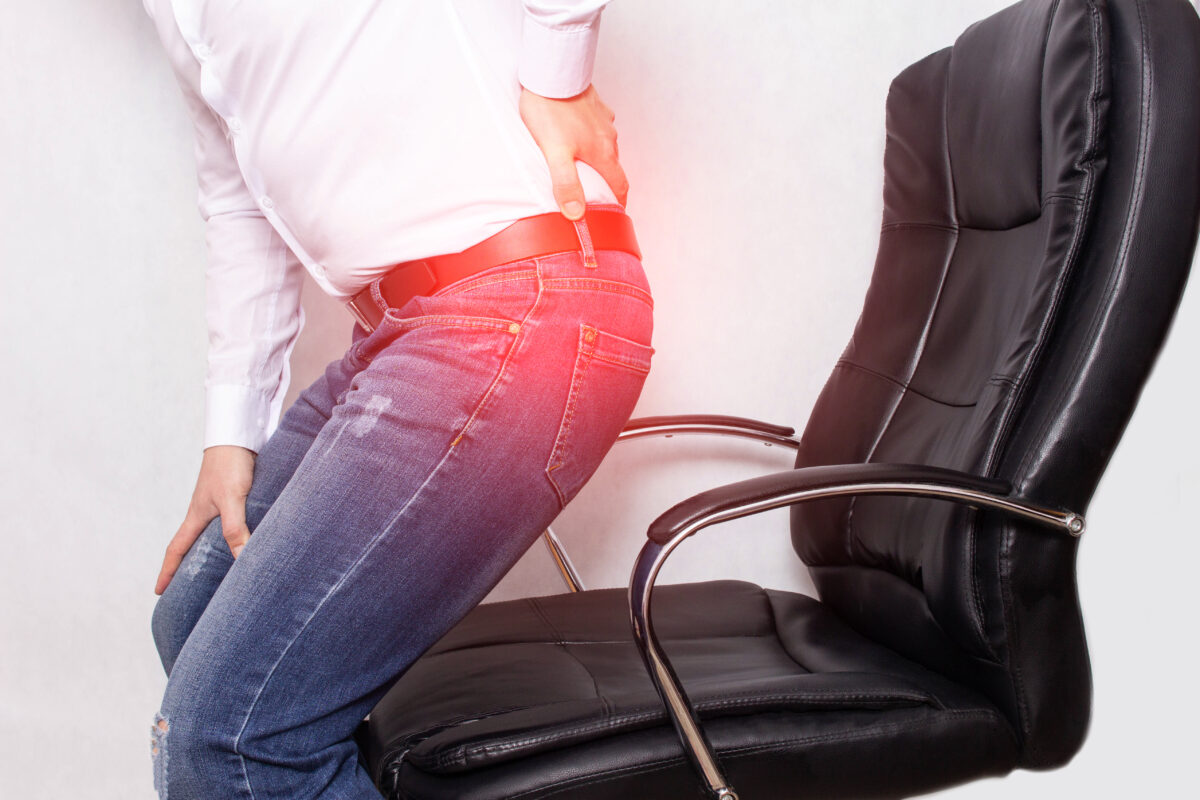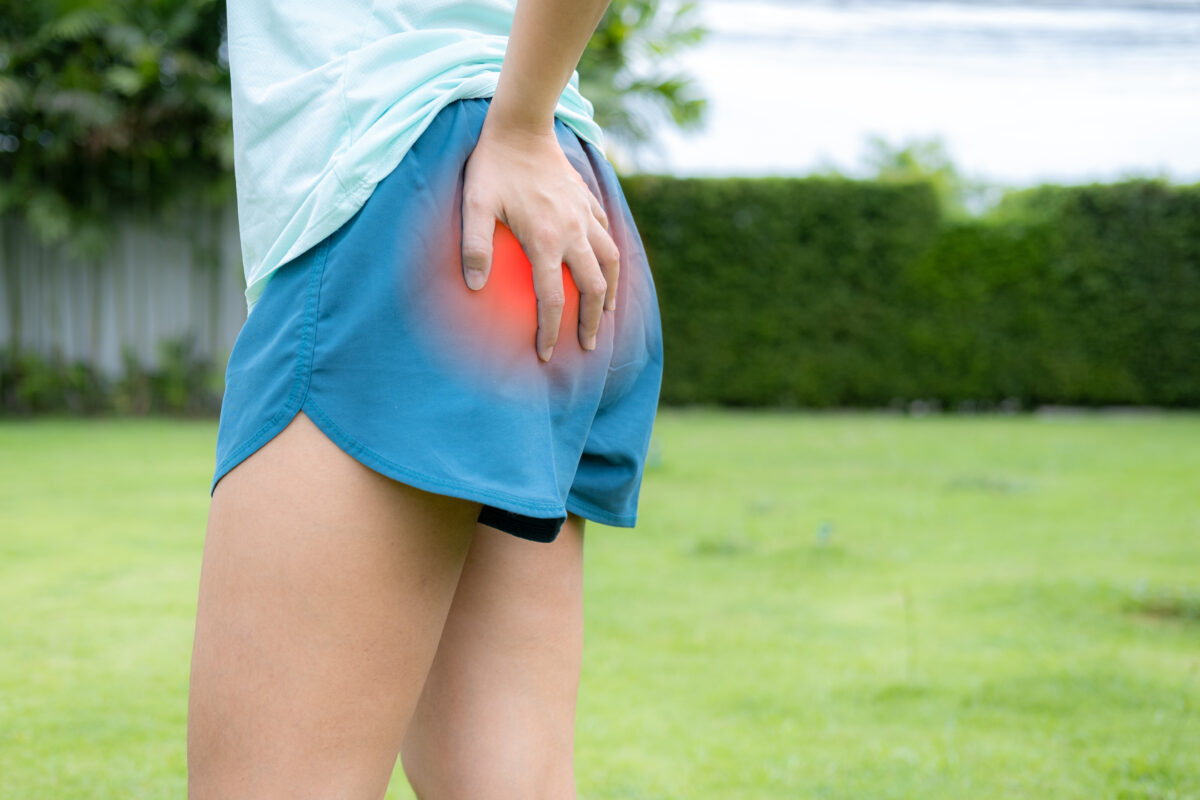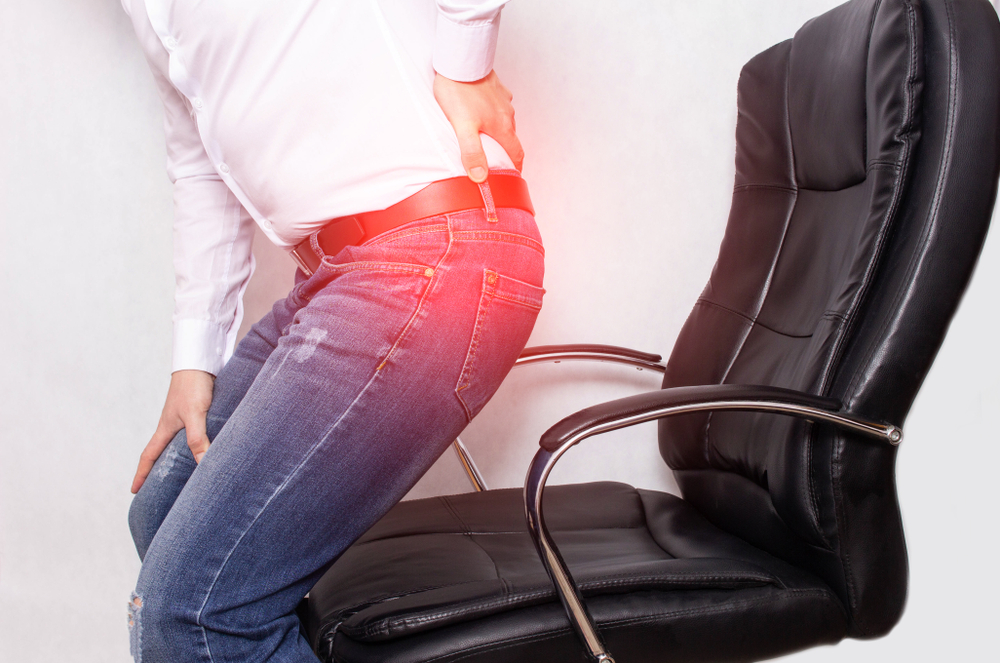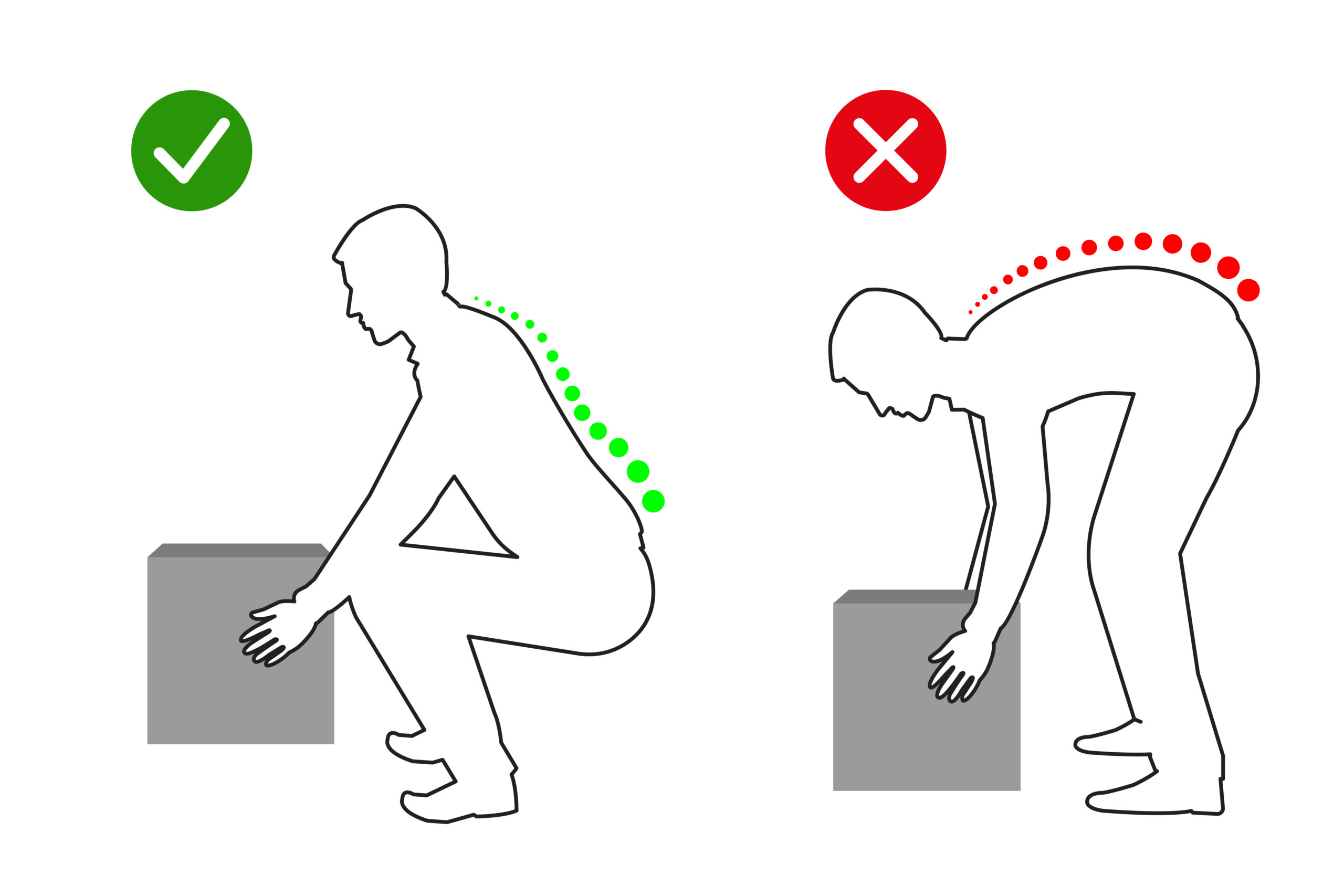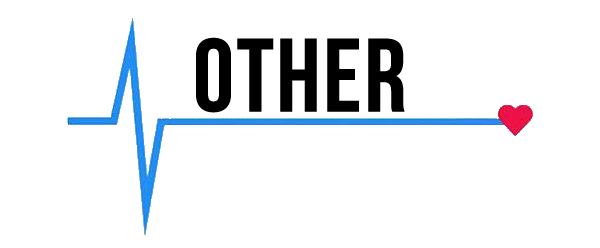An inflamed, compressed, or irritated sciatic nerve root causes sciatica, also known as sciatic pain. There is pain radiating down the legs and into the buttocks caused by the sciatic nerve. Spinal stenosis, a herniated disc, or bone spurs are the most common causes of this condition.
Several Types of Sciatic Pain
Symptoms of sciatic pain differ depending on whether one or both legs are affected and how long they last. There are four types of sciatica: Acute, chronic, alternating, and bilateral.
Both sides of the sciatic nerve originate from the lower spine and travel through the pelvis and buttocks. Afterwards, the nerve passes along the back of each upper leg before splitting into branches that reach the knee and at the feet. While the pain starts in nerve roots located on either side of the lower spine, it then spreads through the nerve that runs along each leg from the buttock to the foot.
An uncomfortable and common condition, sciatica is also known as sciatic nerve pain. Approximately 40 percent of the general population is affected at any given time. A type of pain that can profoundly affect daily life, sciatica can be very annoying. This is why acupuncture and back pain are so frequently researched these days, due to a strong healing correlation.
The Sciatic Nerve
A nerve originates from the L4 vertebra, the L5 vertebra (top of spine), and the sacrum, which is the triangle-shaped bone just below the vertebrae. Afterward, the sciatic nerve splits and runs through each thigh. There can be shooting pains down the sciatic nerve when any of these nerves are irritated.
- Acute sciatica. In sciatica, an acute onset is defined as a recent onset with a pain duration of four to eight weeks or less. Oftentimes, it responds to at-home treatment and does not require medical attention.
- Chronic sciatica. The pain associated with chronic sciatica lasts more than eight weeks and is persistent. It is possible that at-home treatments will not provide relief. Choosing the best treatment should be determined by a healthcare professional.
- Bilateral sciatica. Both legs are affected by bilateral sciatica at the same time. A disc or vertebral degeneration may cause this extremely rare condition.
- Alternating sciatica. Sciatica that alternates between both legs is known as “alternate sciatica.” Despite being rare, sacroiliac joint degeneration may cause this type of sciatica.
However, before focusing too much on sciatic pain in your legs, know that the underlying issue stems from your spine. This is one reason acupuncture for chronic back pain has become such a popular treatment for so many patients today.
The Source of Your Sciatic Nerve Problems
In light of the fact that the sciatic nerve originates in the L4 and L5 vertebrae, along with the sacrum, this can lead to a variety of symptoms and types of sciatic pain. When sciatica originates in the L4 nerve root, the pain usually travels down the outer part of the thigh, around the knee, and down the inner aspect of the leg. As well as on the inside of the leg, it can also occur on the outside.
L5 pain is likely to radiate down the side of the leg and the back of the thigh if it is coming from the nerve root. Big toe pain can extend all the way to the top of the foot.
According to many doctors who study acupuncture and back pain, the sacral nerve may be the source of your sciatic nerve pain. An individual usually feels pain along the back of their leg and on the outside of their foot.
There are several things that can cause sciatica, such as a herniated disc, bone spurs, collapsed vertebrae, infection, tumor, mass in the pelvis, or cysts which pinch the lumbar nerves. Acupuncture treatment for back pain is usually one of the best treatments available.
Insights on Herniated Discs and Sciatic Pain
Sciatica and sciatic pain are most commonly caused by a herniated disc. Disc tears or cracks can pinch the sciatic nerve when they bulge into the spinal canal. Some people suffer from pain for a much longer period of time before resolving their symptoms.
In the spine, discs act as cushions between bones. Pain, weakness, or numbness can be caused when a disc is pushed out of place and tears into the outer layer of the spine.
Herniated discs can cause no symptoms, but sometimes their pain is so severe that surgery is needed. As part of this pain management protocol, doctors identify a patient’s specific needs (such as the source of their pain) through an assessment, and they then create a personalized set of exercises that target posture, sleep modifications, and other advice to improve alignment and pain. Acupuncture and back pain specialists have been studying these issues — along with appropriate treatment and protocol — for decades.
Even healthy people can develop disc protrusions. Nearly one-third of healthy 20-year-olds have disk protrusions, according to a famous study. A herniated disk affects almost every second person without low back pain as they age, and up to 43 percent at the age of 80. There are even more disk bulges at the age of 80, with 84 percent.
You should realize that even if your MRI scan does show a bulging or protruding disc, these findings are completely normal. An MRI scan alone cannot explain pain because it is a complex phenomenon. Acupuncture for chronic back pain can usually solve many of these sophisticated spine problems, depending on the patient.
Sciatica and Neurological Symptoms
Sciatic pain may be accompanied by neurological symptoms when the sciatic nerve is compressed. Symptoms that may come with this condition include:
- Your thigh muscles are weak. The thighs may appear weak when brought together and the thigh muscles are affected.
- You experience muscle weakness in your legs and feet. There may be weakness when bending the knee or pointing the foot upwards and/or downwards if the leg muscles are affected. Walking may be difficult due to these issues, resulting in foot drop. Walking on tiptoes or rising from a sitting position may also be difficult.
- You feel numbness. The sciatic nerve may not allow nerve impulses to pass through, resulting in loss of sensation. In most cases, numbness affects the side of the calf, the heel, the sole, or the top of the foot.
- You experience paresthesia. Due to improper nerve conduction, an abnormal sensation is felt on the skin. You may experience tingling, tightness, pins-and-needles, or crawling sensations in your thigh or leg back.
It’s more common when the sciatic nerve is compressed that neurological symptoms result in reduced function of the affected leg, a situation that acupuncture and back pain doctors can directly address.
Sciatic Pain Treatment for Suffering
Surgery for sciatic pain should be the last resort unless it’s urgent or an emergency. The problem may require a variety of surgical options, but biportal endoscopic spine surgery is usually the best option for relieving pressure on the nerves.
Sciatica surgery has often been found to provide relatively little pain relief compared to non-surgical options after just a few months. After a full year, most patients do not experience significant pain relief.
Considering the pain associated with sciatic nerve pain, finding effective relief is crucial. It is often worse to suffer from leg pain, also known as radiculopathy, than from back pain. The sensation is usually felt in one leg and can be unbearable. It is often compared to a toothache type of nerve pain.
Sciatic nerve pain can be relieved with several home remedies, exercises, and conservative approaches. The best thing you can do for your pain is to try all non-surgical modalities, unless your injury necessitates an emergency visit.
Sciatic nerve pain can be treated with anti-inflammatory medications, nutrition changes (as recommended by your doctor or nutritionist), and stretches and exercises performed with a physical therapist, including core and trunk stability exercises.
Acupuncture treatment for back pain can also be integrative — and if the pain happens to be very severe or debilitating, epidural injections may be an option.
Acupuncture Therapy Cures a Variety of Ailments
Often, acupuncture and back pain therapy can help with a lot of health problems, including sciatic pain. It’s usually used for chronic (long-term) pain like arthritis, back pain, neck pain, shoulder pain, knee pain, headaches, migraines, sports injuries, jaw pain, sinus congestion and facial pain, neuropathy, and menstrual cramps.
Your body may need a number of treatments, depending on how severe your condition is. Most patients have an appointment once a week. Some people get treatment more often, while others get it less frequently. Our acupuncturists can recommend the right schedule for each patient.
The exact healing mechanism behind acupuncture therapy isn’t fully understood, but it’s thought to involve a combination of things. One of those things is the release of endorphins, which relieve pain. Stimulating the nervous system is another, which can also help regulate mood, pain, and other bodily functions. It also helps you relax and relieve stress.
Although acupuncture for chronic back pain treatment is generally safe, make sure you find a licensed acupuncturist in your state. It’s not uncommon for patients to endure side effects, especially since needles can cause mild pain or soreness. Certain patients can also experience bruising, dizziness, lightheadedness, and nausea.
A professional acupuncturist can help, as tailored and customized treatment plans are known to provide the best solutions. There are a variety of health problems acupuncture therapy can treat, and it’s usually very safe and effective.
Wellness and Pain Can Help
A range of options for sciatic pain are available at Wellness and Pain. We offer conservative treatments, routine visits, and minimally invasive quick-recovery procedures. We can keep you free of problems by providing lifestyle education and home care advice to help you avoid and manage issues, quickly relieving the inhibiting lifestyle conditions when complications arise.
At Wellness and Pain, we personalize patient care plans based on each patient’s condition and unique circumstances to relieve pain, improve mobility and mental space, and improve your overall health.


